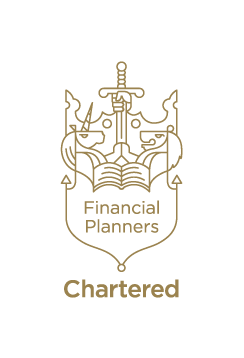Trusts separate assets’ legal ownership from their beneficial ownership. The legal owner holds the title and is empowered to deal with and administer Trust assets, while the beneficial owner – as the name suggests – derives the benefit from them. This could be in terms of usage, income from those assets or sale proceeds.
Gaining control through Trusts
A person known as the ‘settlor’ places assets into a Trust, which may include money, property or other types of assets like life insurance policies and investment portfolios. This may be done during their lifetime (a Lifetime Trust) or can be triggered by death through a valid Will (a Will Trust). By placing the assets into this structure, the original owner may relinquish some of their rights and delegate responsibility to a trustee during their lifetime.
However, they can gain a lot more control in other ways. A settlor can project their wishes years into the future. Provided a Trust is set up correctly, you can determine who gets what and when with a good deal of precision. Trustees can be professionals (who work for a Trust company) or any other competent person prepared to take on these responsibilities.
Very wide-ranging powers and tasks
Trustees can have very wide-ranging powers and tasks, including settling tax bills and hiring investment management and legal professionals. If the Trust is discretionary, meaning they have discretion regarding the distribution of assets, they might also have to make certain decisions about how to use the Trust income and/or capital.
For these reasons, many prefer to have their Trust administered by professionals, paying them annual fees from the Trust’s assets. However, others looking to structure family wealth may appoint a mixture of professional and family friend trustees to create a balance of objectivity and personal knowledge of the beneficiaries’ situations and needs.
Emotional aspects of Trust management
Combining professional expertise with personal familiarity can ensure that both the technical and emotional aspects of Trust management are adequately addressed. Professional trustees bring technical know-how and impartiality, while family friends may offer deeper insight into the beneficiaries’ circumstances.
By thoughtfully selecting trustees, you can achieve effective and empathetic management of your Trust, ensuring that your wishes are fulfilled as intended. A blend of professional and personal trustees can provide a balanced approach, safeguarding the beneficiaries’ financial and personal interests.
Types of Trusts
Various types of Trust are available, and the settlor needs to decide which type is best suited for the circumstances.
A quick summary of the principal types of Trust is as follows:
Bare/Absolute Trusts – Where the settlor transfers the legal ownership of assets to the trustee for the benefit of the beneficiary absolutely.
Interest in Possession Trusts – The beneficiary (or sometimes known as ‘life tenant’) holds a right to the Trust fund’s income or the right to use Trust assets. The remainderman’s (the person who receives the property after the death of the life tenant) entitlement relates to the underlying capital.
Discretionary Trusts – This arrangement gives trustees flexibility and control over how best to use the Trust assets for the benefit of the beneficiaries. This flexibility helps in situations where children or grandchildren may not yet be born at the time the Trust is set up, as they would therefore automatically be included as a beneficiary.
Note that these are just a few examples; many other types of Trust can be used under different circumstances.
Tax planning and Trusts
It’ll be of no surprise that one of the main reasons for using Trusts is for tax planning and mitigation. For example, when an individual dies, their estate (i.e., net assets) is subject to Inheritance Tax (IHT), meaning the beneficiaries may lose up to 40% of their net inheritance.
If assets are put into trust during a settlor’s lifetime and they survive seven years, they are not part of the estate on death and may escape IHT at that time subject to the 14-year rule not being invoked. Trusts are used in certain IHT planning arrangements for the settlor’s benefit, such as Gift and Loan plans, Discounted Gift Trusts and Flexible Reversionary Trusts.
Trusts in Wills
Trusts are frequently created in Wills, particularly where the beneficiaries are minor children who need someone to look after them financially. Any asset left to a minor under a Will is effectively held in trust for the minor by the executors until the minor reaches majority unless the Will allows payment to be made to a parent.
Trusts can be explicitly created in Wills to ensure that a beneficiary does not benefit until some other age is attained or a condition is fulfilled. There are many other reasons for setting up Trusts, notable examples being to provide a pension, provide for families, assist a charity, give property to those who legally cannot hold it, and gain protection from creditors and business protection.
THIS ARTICLE DOES NOT CONSTITUTE TAX, LEGAL OR FINANCIAL ADVICE AND SHOULD NOT BE RELIED UPON AS SUCH. TAX TREATMENT DEPENDS ON THE INDIVIDUAL CIRCUMSTANCES OF EACH CLIENT AND MAY BE SUBJECT TO CHANGE IN THE FUTURE. FOR GUIDANCE, SEEK PROFESSIONAL ADVICE.
THE FINANCIAL CONDUCT AUTHORITY DOESN’T REGULATE TRUST PLANNING AND MOST FORMS OF INHERITANCE TAX (IHT) PLANNING. SOME IHT PLANNING SOLUTIONS PUT YOUR MONEY AT RISK, AND YOU MAY GET BACK LESS THAN YOU INVESTED. IHT THRESHOLDS DEPEND ON INDIVIDUAL CIRCUMSTANCES AND THE LAW. TAX AND IHT RULES MAY CHANGE IN THE FUTURE.
THE VALUE OF YOUR INVESTMENTS CAN GO DOWN AS WELL AS UP, AND YOU COULD GET BACK LESS THAN YOU INVESTED.


